Collaborations by Ravi Shankar & George Harrison [Music CD]
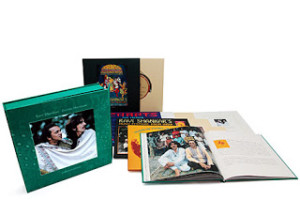
view/request


view/request
Tagged: Indian music, Pop music
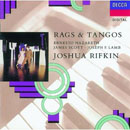
view/request
Put this in the CD player, close your eyes (assuming you’re not driving) and be transported to turn-of-the-20th-century piano heaven. Ernesto Nazareth is the greatest composer you’ve never heard of. His music is descended from Brazilian choro, Frédéric Chopin, and the soul of dance hall piano. In between the Nazareth “tangos” –which aren’t really tangos in any conventional sense– are works by my two favorite ragtime composers: James Scott, the bridge from Joplin to jazz, and Joseph Lamb, who can make the romantic tradition sound like striptease music and fill your heart with nostalgia for places and times that never were. One listen is worth ten thousand words.
Tagged: Dancehall music, Music, Ragtime music
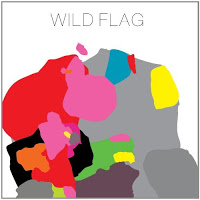
view/request
Tagged: Music, Pop music, Rock music
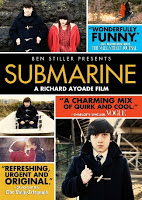
view/request
Olivier Tate (played by young actor Craig Roberts), the protagonist in Richard Adoaye’s quiet, quirky, charming, dark and thoroughly enjoyable film Submarine is a likeable precocious Welsh boy searching for an identity and direction in the stifling climate of small town coastal Southern Wales. He tries on affectations:”I’ve tried smoking a pipe, flipping coins – listening exclusively to French crooners, I’ve even had a hat phase”. This quote is immediately followed of course, with a shot of him at the family dinner table, wearing a Blue Stetson, looking fairly ridiculous. His teenage flailing about for identity finds its focus when he discovers the dark and indifferent charms of classmate Jordana (Yasmin Paige), who lures him into more and more morally reprehensible schoolyard acts. She is outwardly resistant to his charms except when he is misbehaving, and seems most allured by his taking part in the bullying of a fellow school girl. The cast is fantastic, both Paige and Roberts inhabit their roles fully and believably, while the adult characters (Sally Hawkins and Noah Taylor as Olivier’s parents), are comically stuck in their own lazy unspoken despair, too wrapped up in their own ridiculous melodramas to offer guidance to Olivier. Paddy Considine appears as an almost incongruously broad comic foil and rival to both Olivier Tate and his father. Adoaye, most famous for his work on the UK sitcom “The IT Crowd”, who adapted the script from a novel by Joe Dunthorne, directs the film with care and fills it with beautiful shots of the beaches, woods and amusement parks of the Welsh Coast. There are aspects of the film’s plot, details and cinematic style which will appeal to fans of many other refreshingly offbeat comic films (Wes Anderson’s films in particular) but the unique characters, acting performances and Welsh character give it a charm all its own.
Tagged: Comedy, Drama, Feature film, Fiction, Romance
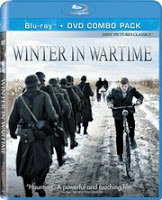
view/request
This beautifully shot period film follows 13 year old Michiel, a small town boy in Nazi-occupied Holland in the Winter of 1945. Michiel’s childhood innocence and restless desire for adventure lead him into increasingly dark and morally ambiguous territories when the realities of war, resistance and adulthood collide and converge upon his small town life. He is apprehensive about his father’s uneasy cooperation with their German occupiers and looks up to his uncle Ben, a resistance fighter whose connections, gifts and attitude intrigue Michiel. When an allied fighter pilot crashes near the village, Michiel and his sister, a young nurse, are drawn into the search for the pilot and must debate whether to take action or remain silent, and question who they can truly trust. The film, while somewhat conventional in some of its WWII era plotlines, offers enough twists and intrigue to keep the viewer’s attention, but its real appeal is grounded heavily in the films setting. The scenes are filmed beautifully and the village, woods, snow, bicycles, knitwear and natural light combine to give the film an enchanting sense of place, and ground the viewer in Michiel’s conflicted world, caught between action and fear, occupation and resistance and childhood innocence and the risks of adult responsibilities. This film is one of several Forbes films now added in Blu-Ray and DVD (both discs are included in one case, so patrons will not mistakenly get home and find the film unplayable), and the Blu-Ray is especially recommended for its crisp picture, which captures the film’s setting wonderfully.
Tagged: Drama, Feature film, Foreign film, Historical fiction, History
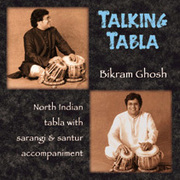
view/request
Talking Tabla is an exciting recording showing off the work of a masterful tabla player. The tabla is a popular Indian percussion instrument, and is ubiquitous in the classical music of Northern India. The tabla consists of two hand drums of contrasting designs: on the left is a kettle drum with a deep sound and variable pitch; on the right is smaller conical drum with a high, fixed pitch. The drums are struck with the fingers and palms of the hands to create the sounds known as bols, these are the syllables of North Indian drumming and can be spoken as well as played; well performed, they sound very much like language, hence the title of this album, Talking Tabla.
On Talking Tabla Bikram Ghosh plays a variety of compositions, fixed and improvised, in a variety of styles, including a piece in the less familiar Carnatic style of South India. Although Bikram Ghosh’s tabla is the focus of these recordings we are not deprived of melody—Ramesh Mishra does a beautiful job playing the sarangi (a kind of elaborate fiddle) on several tracks and on the third track Ghosh accompanies Tarun Bhattacharya’s santoor (hammered dulcimer). In addition, Ghosh’s beautiful baya (left hand drum) application creates a kind of melody of its own. (To fully appreciate this a pair of good speakers or headphones are recommended—don’t listen to this one through your laptop speakers!) Even those who are bored by the idea of an album devoted to the drums should consider listening to Talking Tabla.
Tagged: Drums, Folk music, Indian music
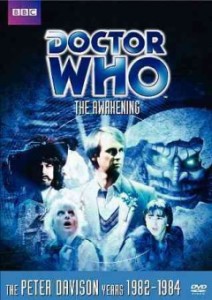
view/request
Peter Davison stars as the Doctor with the cricket inspired get up and celery stalk fastened to his lapel. You’ll have to wait until Davison’s last appearance however to learn the purpose of the mysterious vegetable! Regarding this particular shorter story, the Doctor promises to reunite his companion Tegan with her grandfather in her present time of 1984.
We soon discover that they have actually landed in a time parallel between the years 1643 and 1984 due to an underground beast who is also warping the minds of Little Hodcombe’s citizens and projecting humans from the 17th century in their reality. Confused yet? Check it out for yourself and enjoy this entertaining two-part Doctor Who adventure.
Tagged: British TV, Science fiction, TV series

view/request
Tagged: Classic rock, Concert film, Film, Live recordings, Rock music
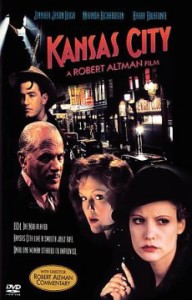
view/request
It’s 1934 and on the eve of a local election in Kansas City, Missouri.
Jennifer Jason Leigh stars as Blondie, a comically fast talking wife of a petty thief. When her husband gets picked up by an intimidating local jazz and gambling club owner stroke gangster named Seldom Seen (played by the great musician and activist Harry Belafonte), Blondie hatches a kidnapping scheme of her own. At gunpoint she drags Carolyn Stilton, the opium addicted wife of a local senator, along through the city in an attempt to free her husband. Miranda Richardson and Altman mainstay Michael Murphy are cast as the seemingly loveless Stilton couple.
Tension enters the film only moments after it begins and it continues to build and build throughout. The backdrop of this chilling drama is the soulful and swinging jazz music that pulsates from Seldom Seen’s Hey Hey Club. In addition, Steve Buscemi, in a role that seems to have served as a warm up for his stint on Boardwalk Empire, is one of the many actors who appear in memorable smaller parts.
Kansas City, though not as loose and off the cuff as many classic Altman movies of the 1970’s, is possibly the director’s most suspenseful.
Tagged: Drama, Feature film, Jazz
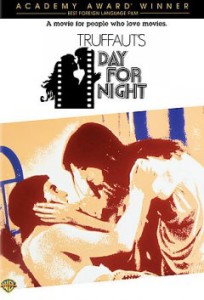
view/request
La Nuit Américaine, or Day for Night, is one of my favorite films. This 1973 film by French director François Truffaut shows the cast and crew of a dramatic film on and off the set. In addition to the obvious work necessarily to make a film—selecting costumes and props, learning lines, building sets, performing for the camera, adjusting lights, etc.—we also see these men and women as they make friends, suffer nervous breakdowns, fall in love, gossip, run away, return, and otherwise live rather complicated lives.
Tagged: Drama, Feature film, French language

view/request
Tagged: Country music, Folk music, Pop music
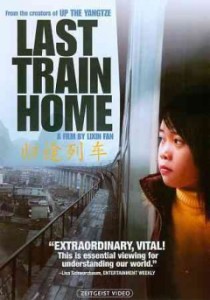
view/request
There are 130 million migrant workers in China, many of whom only journey home to see their families once a year on Chinese New Year. Lixin Fan’s 2009 award winning documentary follows the journey, conflict and struggle of one such family and is a film of remarkable impact. To its western audiences, the film is an eye opening look into the arduous lives of the thousands of low wage workers who produce assemble and manufacture many of our imported goods. While the film exposes the insidious impact of globalization and the poor working conditions of Chinese low wage workers, it is equally successful in capturing universal family conflicts and generational differences. The ‘mass exodus’ of Chinese workers home for the Spring Festival is the world’s largest human migration. The arduous journey of the Zhang family from their urban factory and cramped living conditions back to their poor rural village vividly illustrates the dramatic changes Chinese society has undergone as a result of its economic role in the global marketplace. The film is shot in a cinema-verite, fly on the wall style and the viewer is confronted not only by our role and responsibility as the world’s largest consumers, but by our perspective as the viewer of this hauntingly intimate look into the lives of this family. The parents of the family have sacrificed being present to raise their children for the purpose of sending enough money home to allow their children to pursue their education and have a better life than they have. When their rebellious teenage daughter confronts them about their continual absence and the pressure they place on her to succeed, she addresses the camera directly and the viewer can’t help but feel connected to this extraordinarily personal, politically relevant and remarkably timely film.
Tagged: China, Documentary, Film